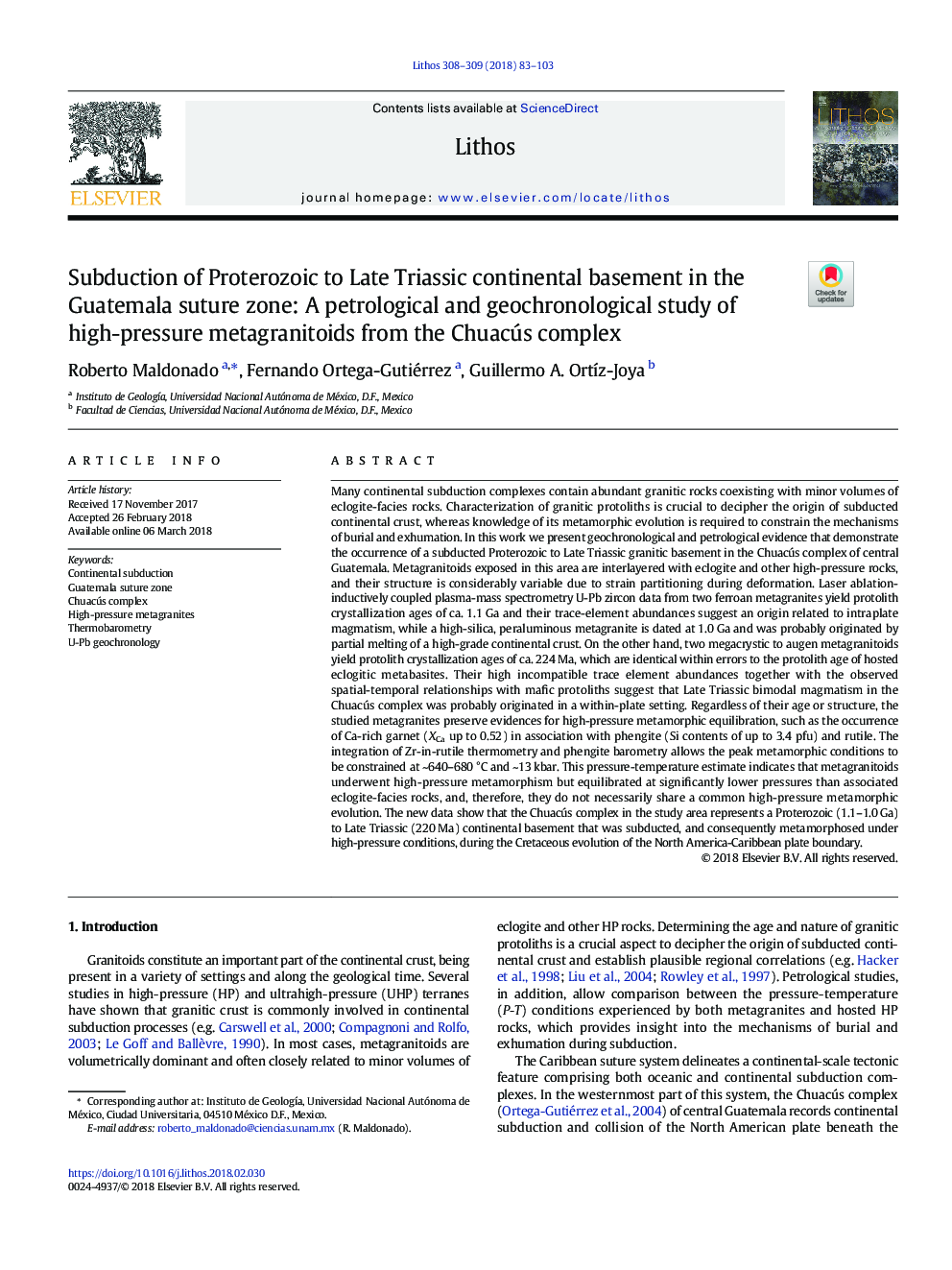| کد مقاله | کد نشریه | سال انتشار | مقاله انگلیسی | نسخه تمام متن |
|---|---|---|---|---|
| 8911637 | 1638620 | 2018 | 21 صفحه PDF | دانلود رایگان |
عنوان انگلیسی مقاله ISI
Subduction of Proterozoic to Late Triassic continental basement in the Guatemala suture zone: A petrological and geochronological study of high-pressure metagranitoids from the Chuacús complex
دانلود مقاله + سفارش ترجمه
دانلود مقاله ISI انگلیسی
رایگان برای ایرانیان
کلمات کلیدی
موضوعات مرتبط
مهندسی و علوم پایه
علوم زمین و سیارات
ژئوشیمی و پترولوژی
پیش نمایش صفحه اول مقاله

چکیده انگلیسی
Many continental subduction complexes contain abundant granitic rocks coexisting with minor volumes of eclogite-facies rocks. Characterization of granitic protoliths is crucial to decipher the origin of subducted continental crust, whereas knowledge of its metamorphic evolution is required to constrain the mechanisms of burial and exhumation. In this work we present geochronological and petrological evidence that demonstrate the occurrence of a subducted Proterozoic to Late Triassic granitic basement in the Chuacús complex of central Guatemala. Metagranitoids exposed in this area are interlayered with eclogite and other high-pressure rocks, and their structure is considerably variable due to strain partitioning during deformation. Laser ablation-inductively coupled plasma-mass spectrometry U-Pb zircon data from two ferroan metagranites yield protolith crystallization ages of ca. 1.1â¯Ga and their trace-element abundances suggest an origin related to intraplate magmatism, while a high-silica, peraluminous metagranite is dated at 1.0â¯Ga and was probably originated by partial melting of a high-grade continental crust. On the other hand, two megacrystic to augen metagranitoids yield protolith crystallization ages of ca. 224â¯Ma, which are identical within errors to the protolith age of hosted eclogitic metabasites. Their high incompatible trace element abundances together with the observed spatial-temporal relationships with mafic protoliths suggest that Late Triassic bimodal magmatism in the Chuacús complex was probably originated in a within-plate setting. Regardless of their age or structure, the studied metagranites preserve evidences for high-pressure metamorphic equilibration, such as the occurrence of Ca-rich garnet (XCa up to 0.52) in association with phengite (Si contents of up to 3.4 pfu) and rutile. The integration of Zr-in-rutile thermometry and phengite barometry allows the peak metamorphic conditions to be constrained at ~640-680â¯Â°C and ~13â¯kbar. This pressure-temperature estimate indicates that metagranitoids underwent high-pressure metamorphism but equilibrated at significantly lower pressures than associated eclogite-facies rocks, and, therefore, they do not necessarily share a common high-pressure metamorphic evolution. The new data show that the Chuacús complex in the study area represents a Proterozoic (1.1-1.0â¯Ga) to Late Triassic (220â¯Ma) continental basement that was subducted, and consequently metamorphosed under high-pressure conditions, during the Cretaceous evolution of the North America-Caribbean plate boundary.
ناشر
Database: Elsevier - ScienceDirect (ساینس دایرکت)
Journal: Lithos - Volumes 308â309, May 2018, Pages 83-103
Journal: Lithos - Volumes 308â309, May 2018, Pages 83-103
نویسندگان
Roberto Maldonado, Fernando Ortega-Gutiérrez, Guillermo A. OrtÃz-Joya,